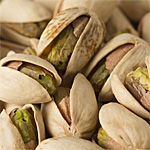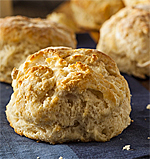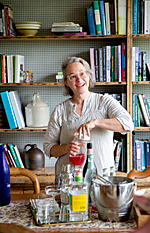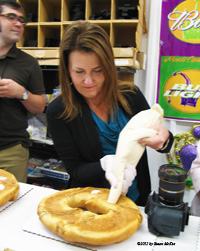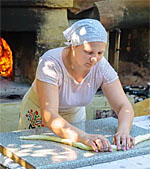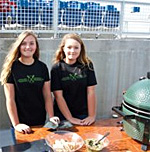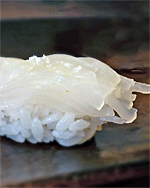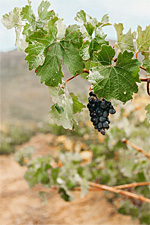The Portuguese Love Affair with Egg Yolks
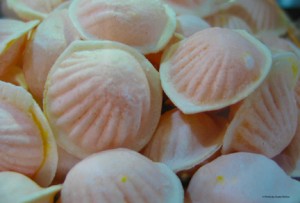 Special to Road Trips for Foodies
Special to Road Trips for Foodies
From InsidePORTUGALtravel.com
The love of egg yolks used in traditional pastries is said to be a result of making wine! When the Portuguese started to export their wine, they quickly realized that filtered wine was preferred over unfiltered. After experimenting with many different options, using egg whites was found to filter wine most effectively. All theses egg whites were being used, but what happened to the egg yolks that were left? It is common belief that the medieval nuns used vast quantities of egg yolks to iron their habits as well as develop endless dessert recipes to use all the surplus yolks.
Today, the Portuguese still enjoy rich, egg-based desserts that are often seasoned with spices such as cinnamon and vanilla. Perhaps the most popular is leite-crème or egg and milk custard. It consists of milk, flour, sugar, lemon zest, cinnamon and seven egg yolks, but the intriguing part of this recipe is the need for an iron. Yes, an iron. After the custard is done cooking, heat the base of a flat or cast iron over a high flame and apply it to the sugar for a few seconds to allow the sugar to caramelize. Using a blowtorch is also an option, but when given the chance, who wouldn’t want to iron their dessert?
Another popular dessert is called Arroz Doce or rice pudding. This dish can be seen during Christmas time in Portugal at many festas (parties). Aletria is a similar holiday dessert but is based upon vermicelli, and both are often decorated with elaborate stenciled patterns of cinnamon powder.? ?Originally from Lisbon, the ever-popular pastéis de nata have made a name for themselves nationwide. These are small, extremely rich custard tarts often sprinkled with cinnamon and powdered sugar. These two bite treats supposedly go back almost 200 years with a recipe that is still a secret to this day.
In the southwest section of Lisbon, you can find a bakery and coffeehouse called Pasteis de Belem, which is another name for pastéis de nata but under a trademark since 1837. The Portuguese claim to know the difference between the two, pastéis de nata being the more popular name worldwide and Pasteis de Belem claiming to be the original Portuguese treat from Antiga Confeitaria de Belém where more than 10,000 units are produced and sold daily. The word on the block is that only three or four people know the secret ingredient. Some say it’s in the shell and some say it’s in the filling, but no matter where you try them, you are bound to go back for seconds.
Other popular pastries found in cafés, bakeries and pastry shops across the country include the bola de berlim, similar to a donut, the traditional sweet cake or pão-de-ló, papos-de-anjo and ovos moles- both with a sugar and egg yolk base. In the south, especially in the Algarve region, recipes may also include almonds and marzipan.
Most towns take the typical egg or cream-based pastry and create their own local specialty. Take queijadas for example.
Queijadas de Sintra: These small egg pastries are made with fresh cheese as the main ingredient. They start with a thin, flaky crust, which is then filled with a mixture of flour, sugar, egg yolk, fresh cheese and cinnamon. Queijadas de sintra are easily recognizable by their hand-wrapped artisan paper packages that come in rolls complete with around seven queijadas. Despite the unique variations, queijadas de sintra appears to be a local favorite in and around Lisbon.
Fradinhos: These are queijadas made with marzipan from Mafra, Portugal. It is lesser known, but equally as mouth watering!
Tortas de Azeitão may be better well known as queijadas partly because of the large billboards that display these finger-licking treats along the Portuguese highways. Tortas are practically a household brand in the little town of Azeitão, located south of the capital. Completely different in looks and taste from Queijadas, it’s surprising that they use virtually the same set of ingredients (except for the cheese). Consisting of a sweet egg yolk paste spread on sheets of soft, sponge cake-like dough, sprinkled with cinnamon, and then rolled up and cut, Tortas look like a healthier version of a Twinkie.
As for the Azores, the highlight may be the Queijadas Dona Amélia, pastries made with honey and cinnamon – they are dense and packed with flavor from spices and molasses. According to the history books, the name of this pastry was crafted to honor the visit of Queen D. Amélia and King Dom Carlos to Terceira.
Secret recipes seem to be a theme when discussing Portugal’s tasty treats. Tentúgal pastries, shaped like a cigar, are baked puff pastry sticks filled with a sweet custard comprised of- you guessed it- egg yolks and sugar.
By 1890, the guesthouse Hospedaria Dona Maria da Conceição began to bake and sell these pastries. Being the only place that sold them between Coimbra and Figueira, the guesthouse was visited frequently by travelers. This family recipe was kept secret until the 1950s when a new baker began to massively produce these popular sweets. The production of Tentúgal pastries turned out to be quite profitable, helping restore the struggling town of Tentúgal, Portugal.
A video (in Portugese) demonstrating how to make Ovos Moles: “Visita à Fábrica de Ovos Moles de Aveiro”.
(Photo of ovos moles de Aveiro ©2008 by Susan McKee)


